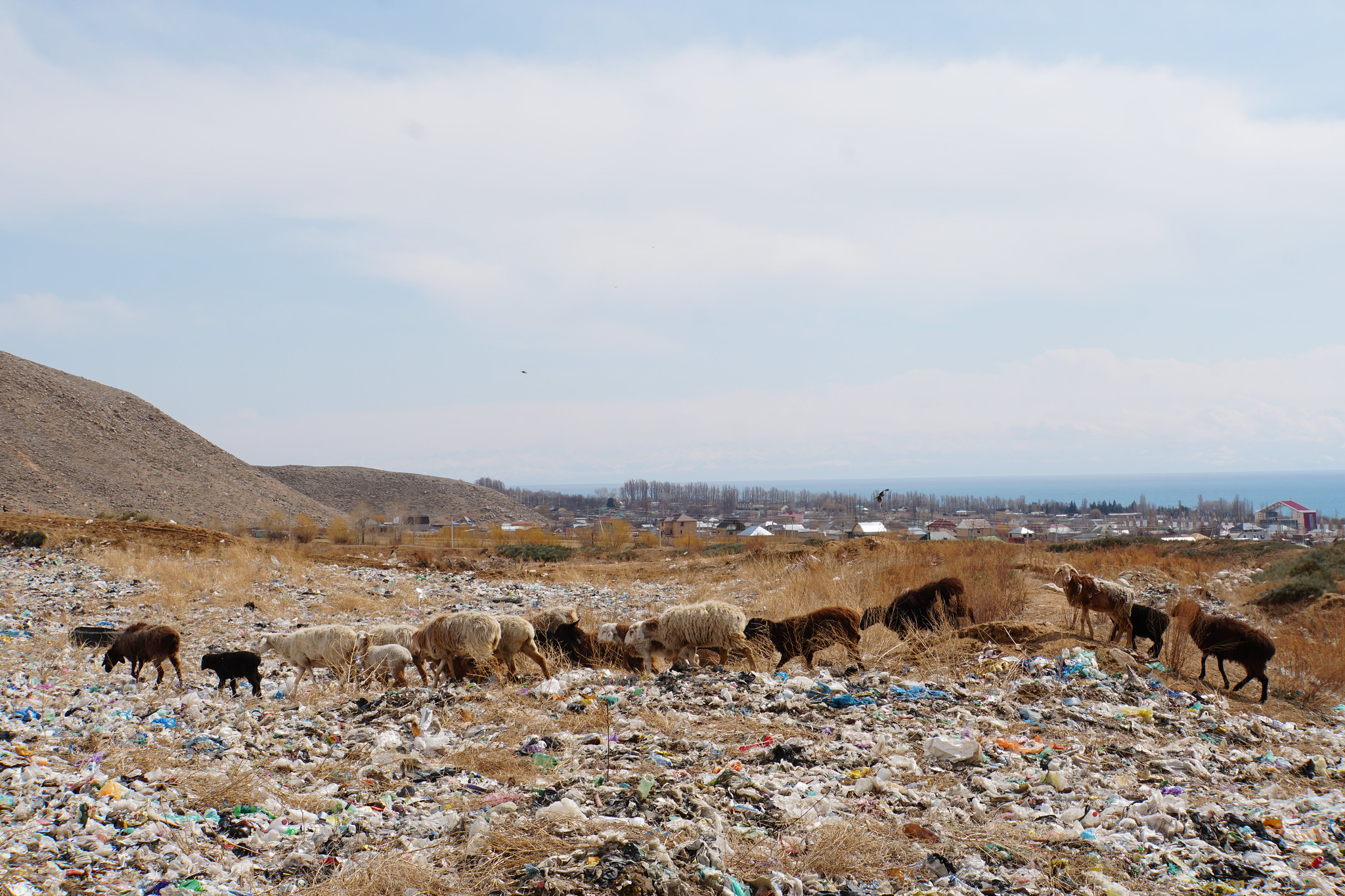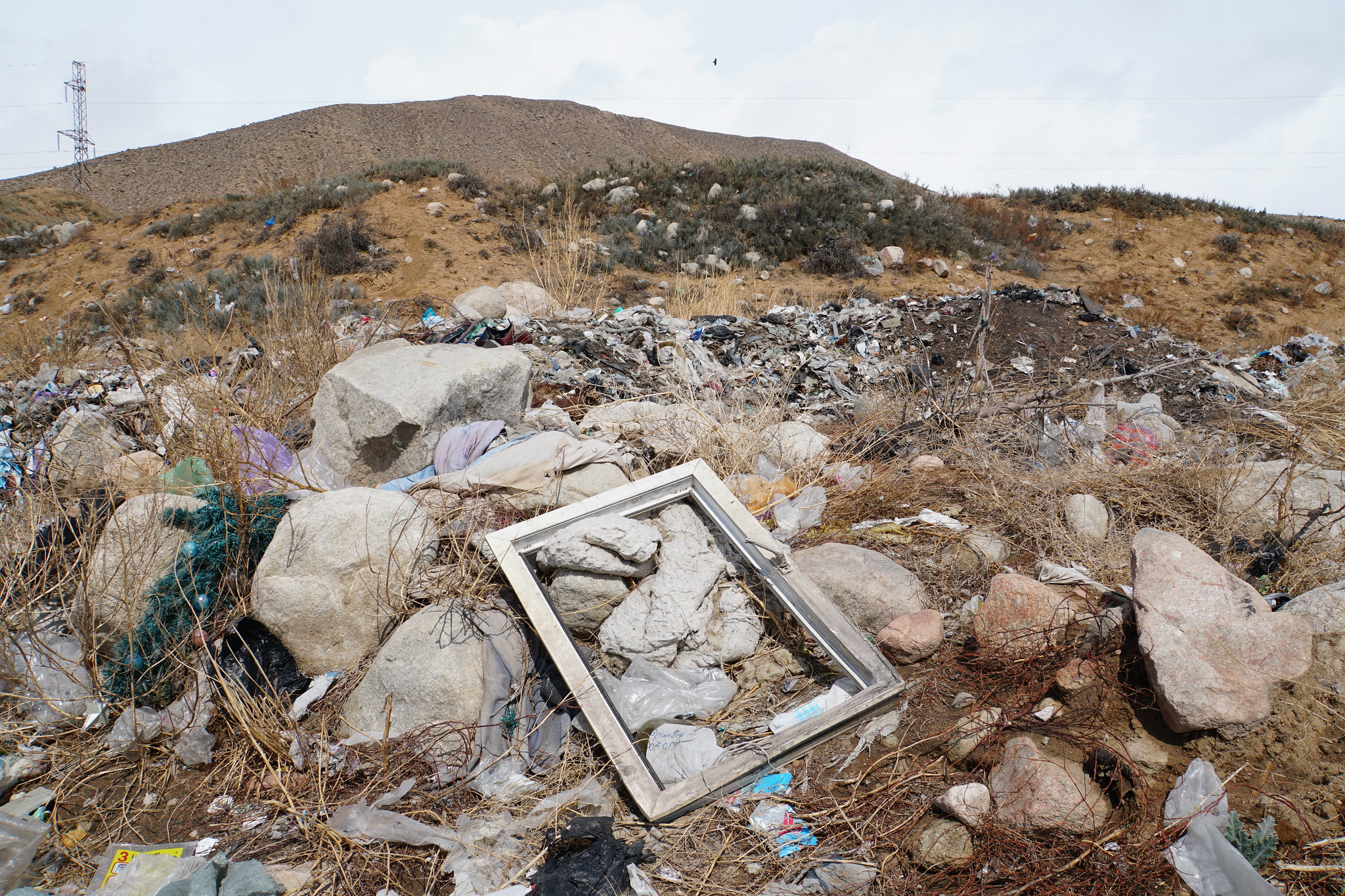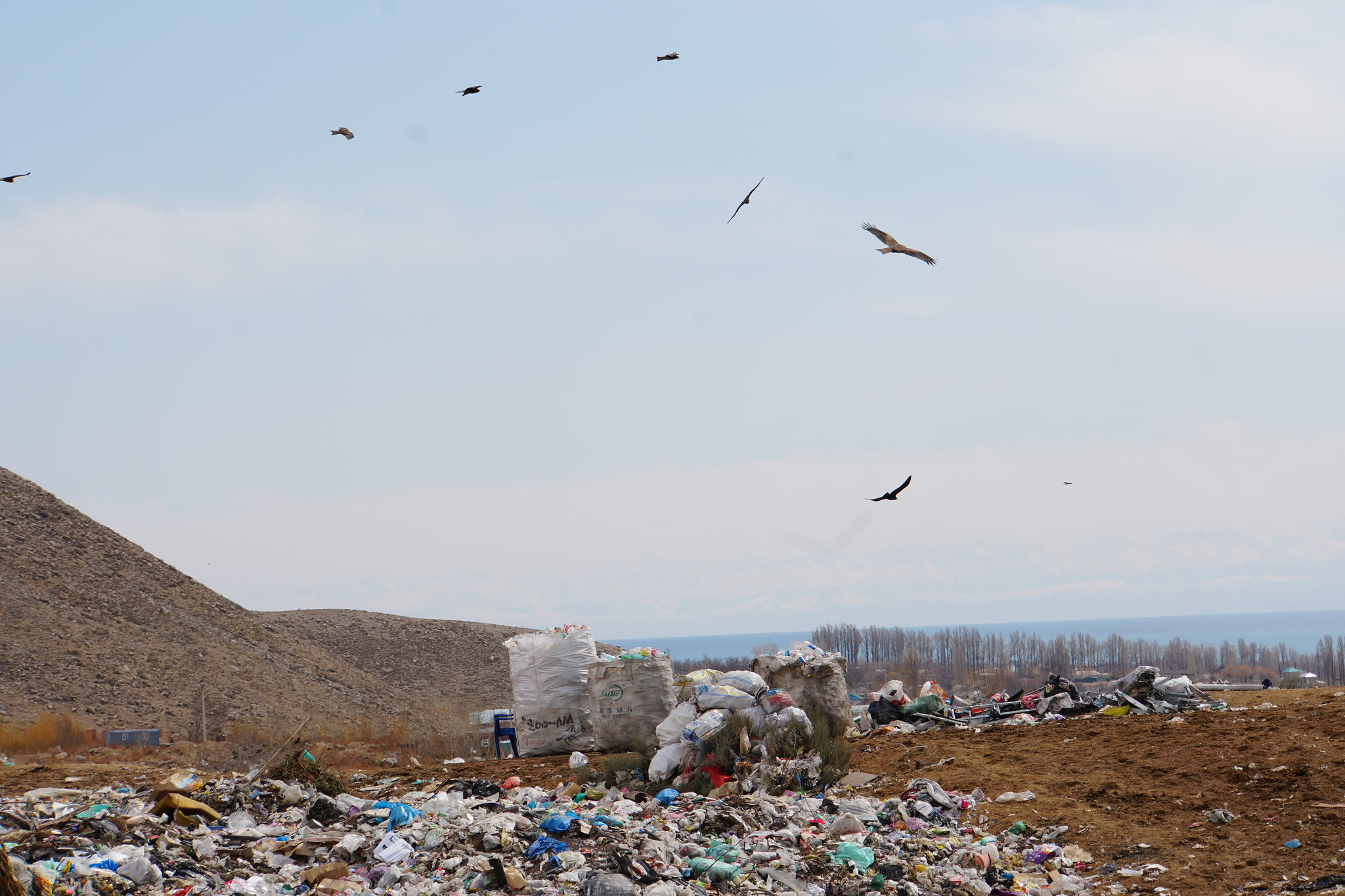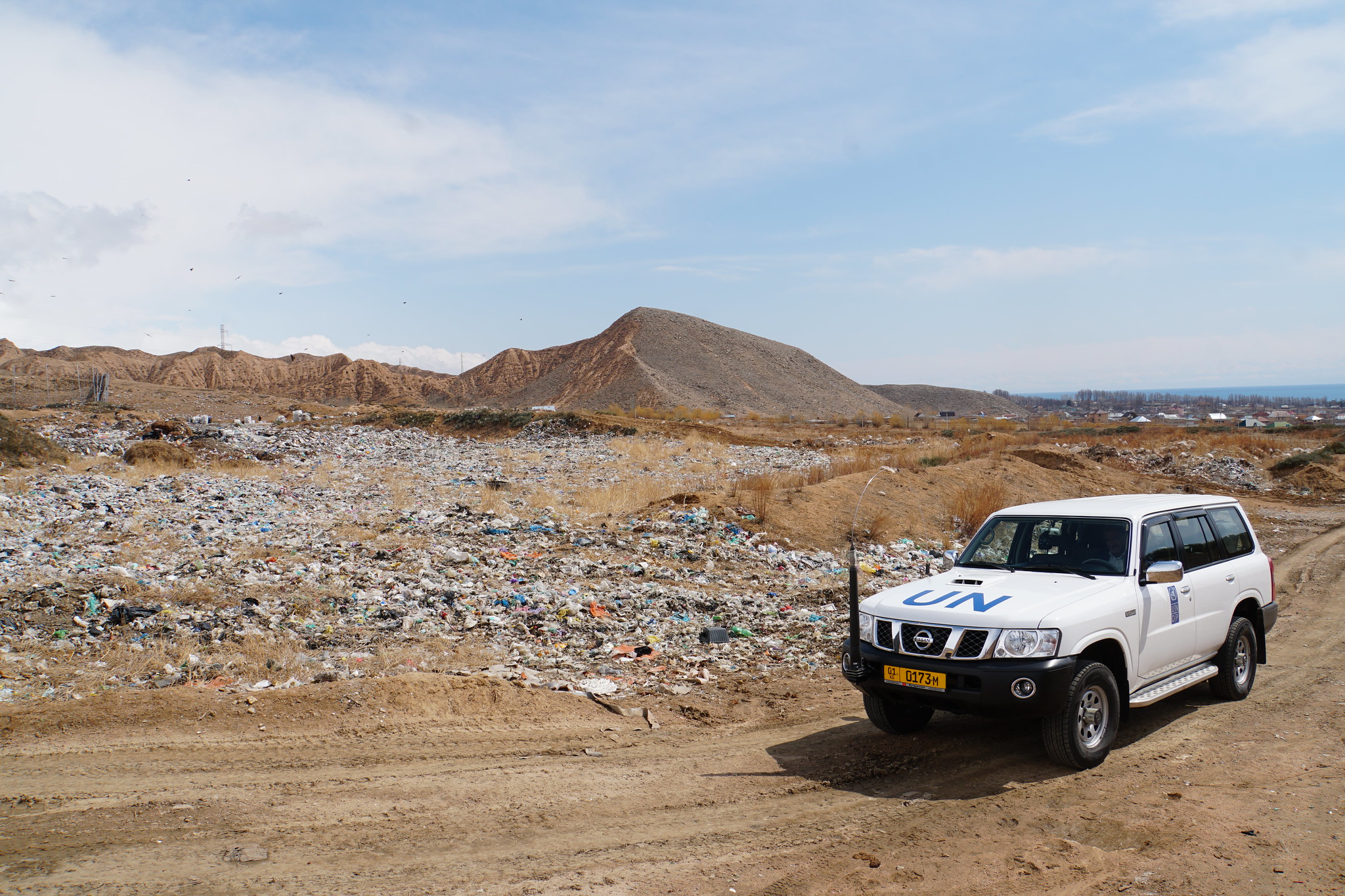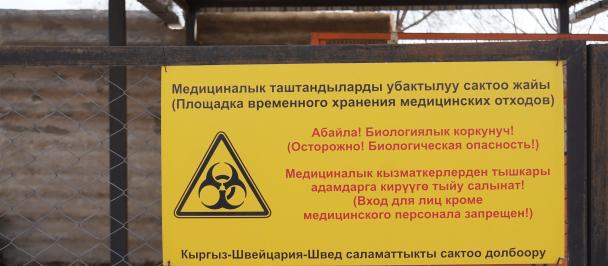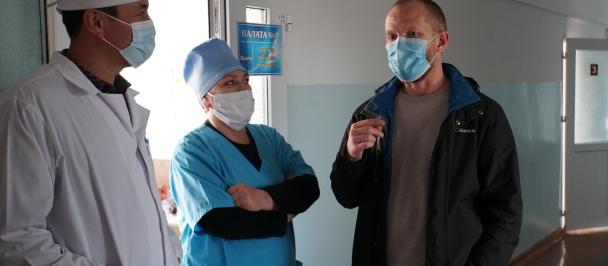Photo: Chyntemir Kalbaev / UNDP Kyrgyzstan
Health care activities are aimed at protecting and restoring health and saving lives. But what about the waste and by-products that arise from these activities? The question is very serious. In order to reduce the risks of human infection, the spread of infections and the emergence of epidemics, the Kyrgyz State Medical Institute for Retraining and Advanced Training, together with UNDP, has developed a video course on medical waste management.
Lack of awareness of the health hazards associated with waste from healthcare facilities, inadequate training in proper waste handling and disposal, lack of treatment and disposal systems, inadequate financial and human resources, and low priority given to these issues are the most common problems. Many countries either do not have adequate regulations or do not enforce them.
Asel Kanymetova, physician-epidemiologist at the Republican Scientific and Practical Center for Infection Control, Preventive Medicine Research and Production Association, answers questions about the situation in Kyrgyzstan.
- What are the main problems in this area in our country?
- We have been working on this issue for about 20 years. We've seen a lot. For example, there were nurses with severe asthma, serving this segment for 10-15 years and pouring chlorine into medical waste that was not sorted. Naturally, the disease was the result of this harmful work. We also saw pits in the backyards of hospitals where anatomical waste was dumped. And the dogs digging in these holes.
We saw plastic containers with medical waste smoldering in landfills. It also happened that the waste was burned right on the territory of the hospital. Waste incineration is widely practiced, but improper incineration or incineration of inappropriate materials results in the release of pollutants into the atmosphere and the formation of ash residues. Combustion materials containing chlorine or treated with chlorine can form dioxins and furans, which are carcinogenic to humans and are associated with a range of adverse health effects. Combustion of materials with a high metal content (in particular lead, mercury and cadmium) results in the release of toxic metal vapors.
- Is anything changing?
- Some of the problems have been resolved at the moment. For example, waste is classified, separated, sorted. Many algorithms have changed. In healthcare organizations, for the disinfection of medical waste, they began to use a physical method instead of a chemical one, that is, they use autoclaves, where moist heat under pressure is used. This method is safer both for health care workers in direct contact with medical waste and for the environment. Autoclaving medical waste has allowed healthcare providers to recycle the plastic part of syringes and even make money from it, which also reduces the amount of waste going to city or local landfills. This is a big shift.
But there are still enough dangers and issues to be addressed. The system with the disposal of mercury-containing materials has not been fully resolved. Disposal of drugs and vaccines is only taken under control. There is still a lot of work to be done.
- What is the regulatory framework in our country?
- There is a decree of the Government of the country No. 32, issued in 2012 "On approval of the instruction on Infection control in health care organizations of the Kyrgyz Republic." On its basis, the Instruction on infection control in health care organizations of the Kyrgyz Republic was developed.
Then the order of the Ministry of Health No. 59 dated February 18, 2013 "On the improvement of the safe management of medical waste in healthcare organizations in the Kyrgyz Republic" was issued. This is the first regulatory document to regulate the management of medical waste.
In 2018, the Ministry of Health Order No. 214 "On Approval of Standard Operating Procedures (SOPs) for Medical Waste Management (MSM) in HE and Guidelines for Monitoring and Evaluation of MSM in HE of the KR" appeared. It details the entire medical waste management system: organization of waste management in units, decontamination of medical waste in autoclaves, and actions in emergency situations.
In 2019, the Government of the country issued a decree No. 719 "On the management of medical waste and mercury-containing products in health care organizations of the Kyrgyz Republic."
There is an order of the Ministry of Health No. 526 dated July 17, 2020 "Standard operating procedures for organizing the work of a mobile brigade are developed on the basis of international recommendations for combating coronavirus infection and local regulatory and methodological documents", which also touched on the management of especially hazardous medical waste in the framework of the Covid-19 pandemic
A practical guide "Infection control" was approved by the Ministry in 2018. And the guide "Water supply, sanitation and hygiene in health care organizations of the Kyrgyz Republic within the framework of infection control" appeared in June 2021.
- And what is the danger of medical waste?
- Waste from healthcare facilities can be potentially infectious and contain harmful microorganisms that can infect hospital patients, health workers and others. Other potential risks of infection may include the spread of drug-resistant microorganisms from healthcare facilities into the environment. The adverse health effects associated with waste and by-products are numerous.
This is the risk of infection and injury caused by sharp-piercing objects; toxic effects of pharmaceutical products, in particular antibiotics and cytotoxic drugs released into the environment, and substances such as mercury or dioxins, during medical waste handling or incineration; chemical burns during disinfection, sterilization or waste treatment; poisoning and pollution of the environment with toxic elements or components formed during combustion; thermal injuries due to open burning and the operation of medical waste incinerators; radiation burns. It can be said that almost everything that can harm is harmful.
- Are there any educational, methodological manuals for doctors that allow the situation to change for the better faster?
- There is. In order to reduce the risks, the Kyrgyz Medical Institute for Retraining and Advanced Training, together with UNDP, has developed a video course on medical waste management.
I will add that we note an urgent need to responsibly dispose of all medical waste, even if they are not considered particularly hazardous. Medical personnel are advised to use a specially designed video course, which details the categories of medical waste and how they are disposed of. Highly professional experts have worked on it, and it will be useful in any case.
- When, according to your forecast, will this problem be solved in Kyrgyzstan?
- Forecasts in such matters are a thankless task. But we hope that in five years we will talk about significant successes. There is a lot of work in this area, but the road will be mastered by walking one.
You can watch the course on medical waste disposal on the UNDP Youtube channel at https://www.youtube.com/user/UNDPKG. Note that it was developed by the Kyrgyz State Medical Institute for Retraining and Advanced Training in conjunction with the United Nations Development Program in the Kyrgyz Republic with the financial support of the Government of Japan.
Photo: Chyntemir Kalbaev / UNDP Kyrgyzstan
Photo: Chyntemir Kalbaev / UNDP Kyrgyzstan
Photo: Chyntemir Kalbaev / UNDP Kyrgyzstan

 Locations
Locations